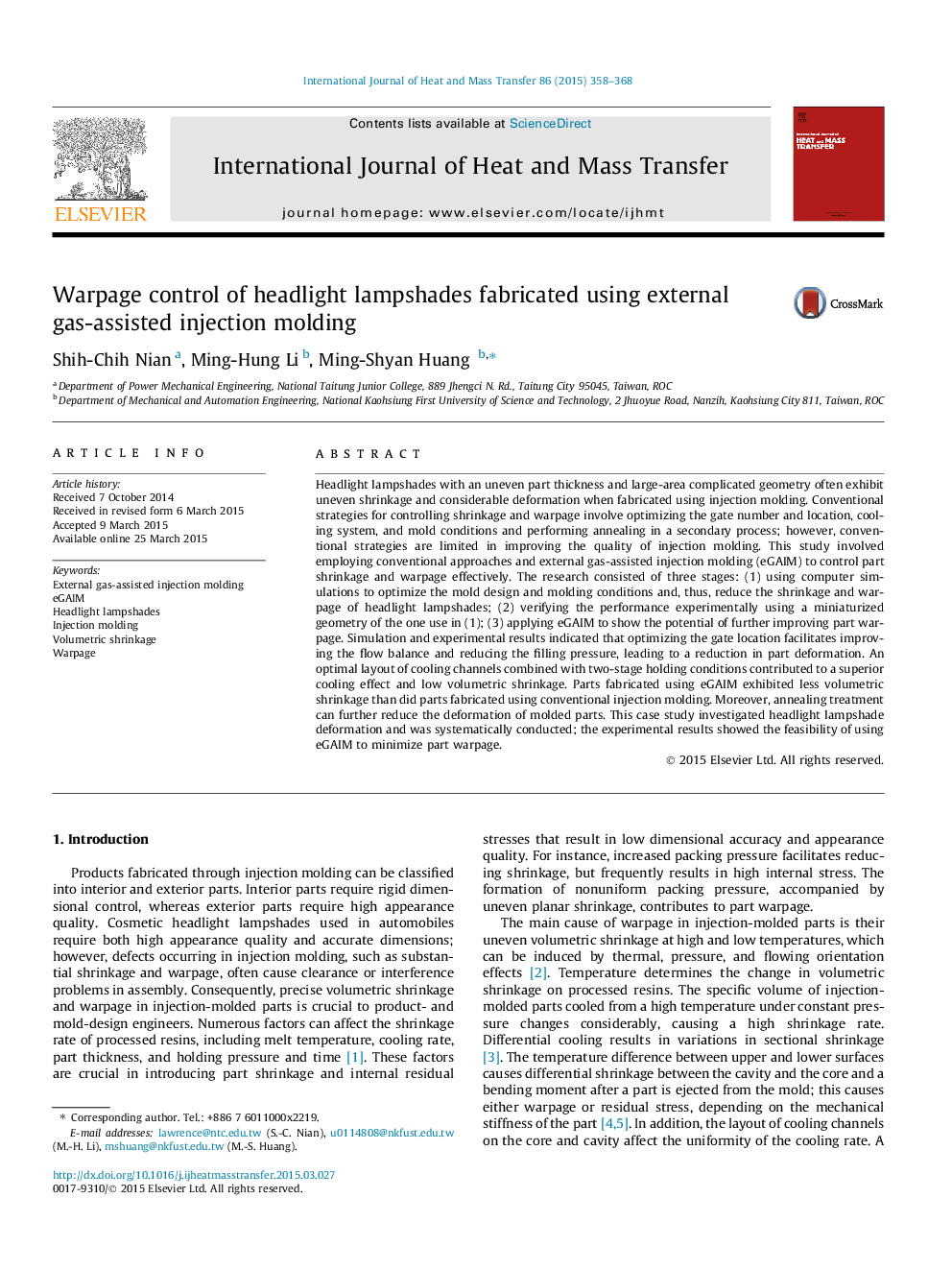| Article ID | Journal | Published Year | Pages | File Type |
|---|---|---|---|---|
| 656744 | International Journal of Heat and Mass Transfer | 2015 | 11 Pages |
Headlight lampshades with an uneven part thickness and large-area complicated geometry often exhibit uneven shrinkage and considerable deformation when fabricated using injection molding. Conventional strategies for controlling shrinkage and warpage involve optimizing the gate number and location, cooling system, and mold conditions and performing annealing in a secondary process; however, conventional strategies are limited in improving the quality of injection molding. This study involved employing conventional approaches and external gas-assisted injection molding (eGAIM) to control part shrinkage and warpage effectively. The research consisted of three stages: (1) using computer simulations to optimize the mold design and molding conditions and, thus, reduce the shrinkage and warpage of headlight lampshades; (2) verifying the performance experimentally using a miniaturized geometry of the one use in (1); (3) applying eGAIM to show the potential of further improving part warpage. Simulation and experimental results indicated that optimizing the gate location facilitates improving the flow balance and reducing the filling pressure, leading to a reduction in part deformation. An optimal layout of cooling channels combined with two-stage holding conditions contributed to a superior cooling effect and low volumetric shrinkage. Parts fabricated using eGAIM exhibited less volumetric shrinkage than did parts fabricated using conventional injection molding. Moreover, annealing treatment can further reduce the deformation of molded parts. This case study investigated headlight lampshade deformation and was systematically conducted; the experimental results showed the feasibility of using eGAIM to minimize part warpage.
